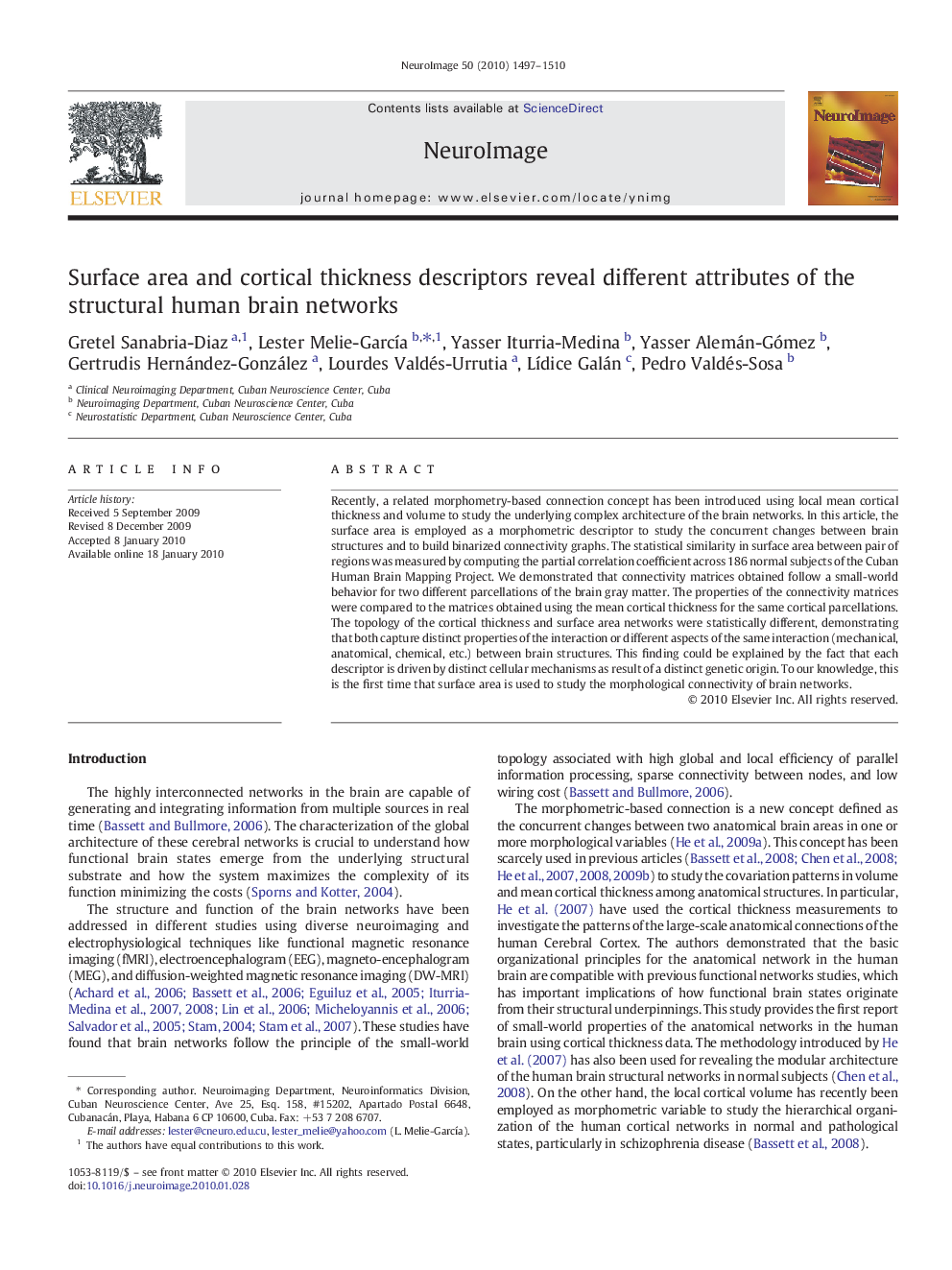| Article ID | Journal | Published Year | Pages | File Type |
|---|---|---|---|---|
| 6037313 | NeuroImage | 2010 | 14 Pages |
Abstract
Recently, a related morphometry-based connection concept has been introduced using local mean cortical thickness and volume to study the underlying complex architecture of the brain networks. In this article, the surface area is employed as a morphometric descriptor to study the concurrent changes between brain structures and to build binarized connectivity graphs. The statistical similarity in surface area between pair of regions was measured by computing the partial correlation coefficient across 186 normal subjects of the Cuban Human Brain Mapping Project. We demonstrated that connectivity matrices obtained follow a small-world behavior for two different parcellations of the brain gray matter. The properties of the connectivity matrices were compared to the matrices obtained using the mean cortical thickness for the same cortical parcellations. The topology of the cortical thickness and surface area networks were statistically different, demonstrating that both capture distinct properties of the interaction or different aspects of the same interaction (mechanical, anatomical, chemical, etc.) between brain structures. This finding could be explained by the fact that each descriptor is driven by distinct cellular mechanisms as result of a distinct genetic origin. To our knowledge, this is the first time that surface area is used to study the morphological connectivity of brain networks.
Related Topics
Life Sciences
Neuroscience
Cognitive Neuroscience
Authors
Gretel Sanabria-Diaz, Lester Melie-GarcÃa, Yasser Iturria-Medina, Yasser Alemán-Gómez, Gertrudis Hernández-González, Lourdes Valdés-Urrutia, LÃdice Galán, Pedro Valdés-Sosa,
